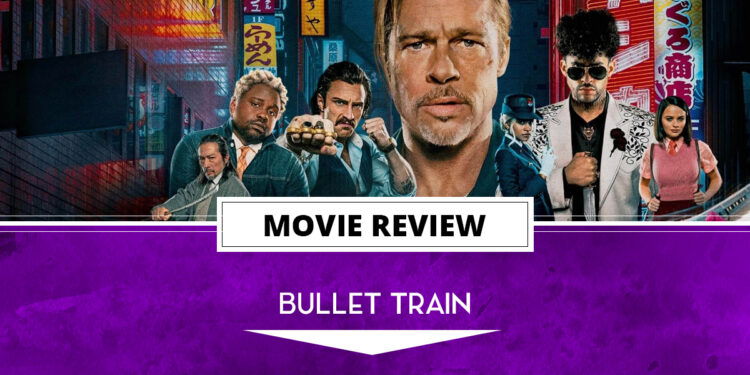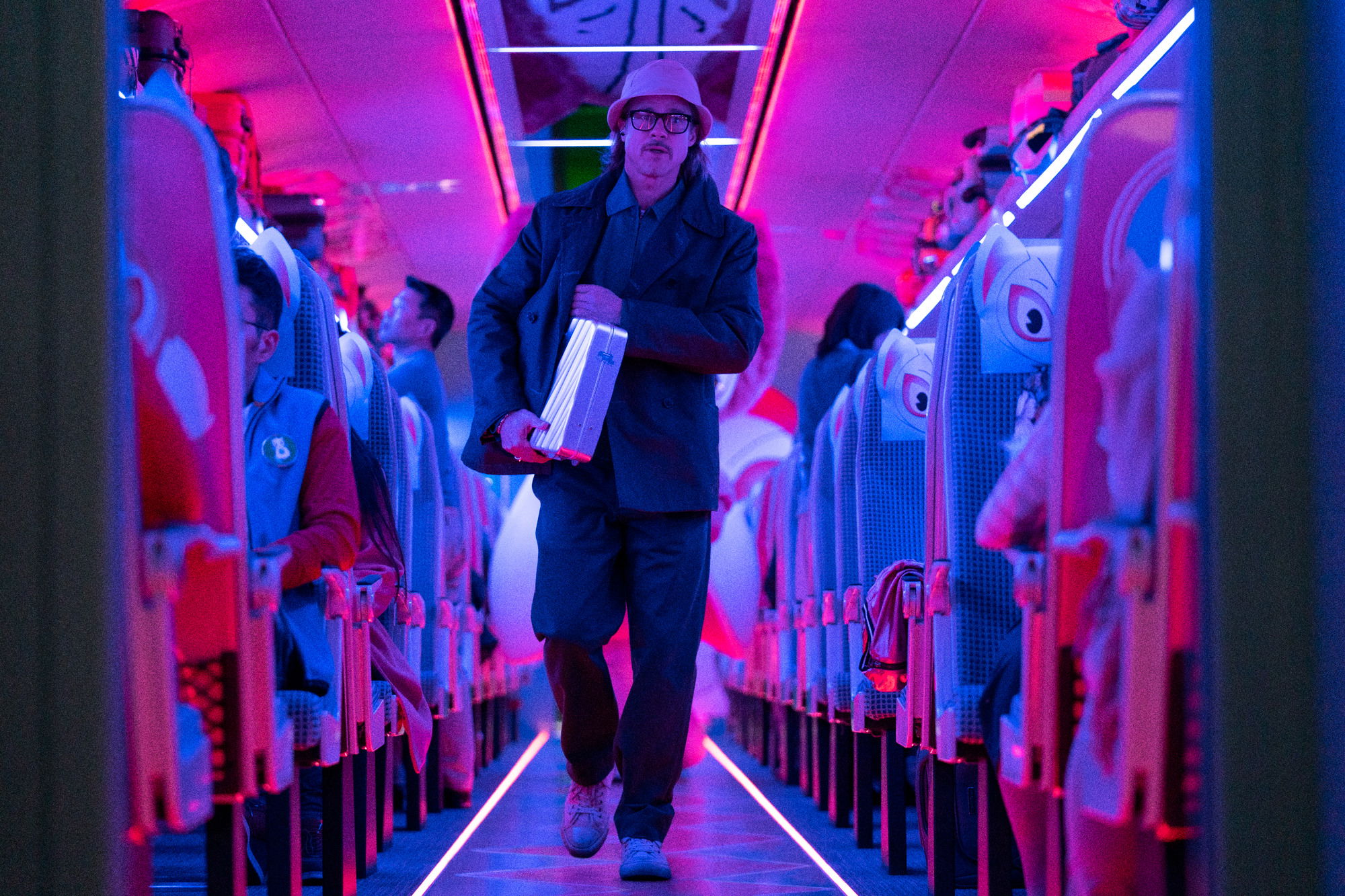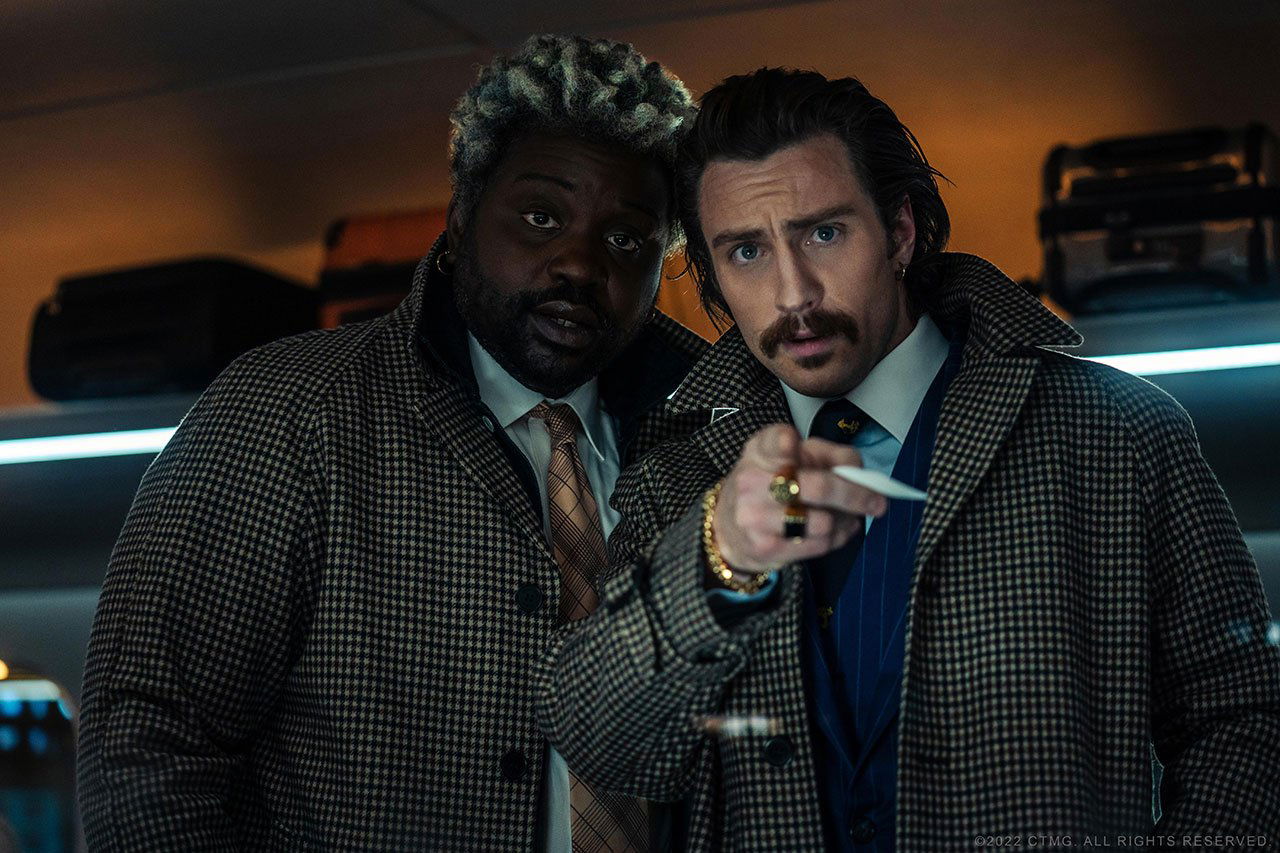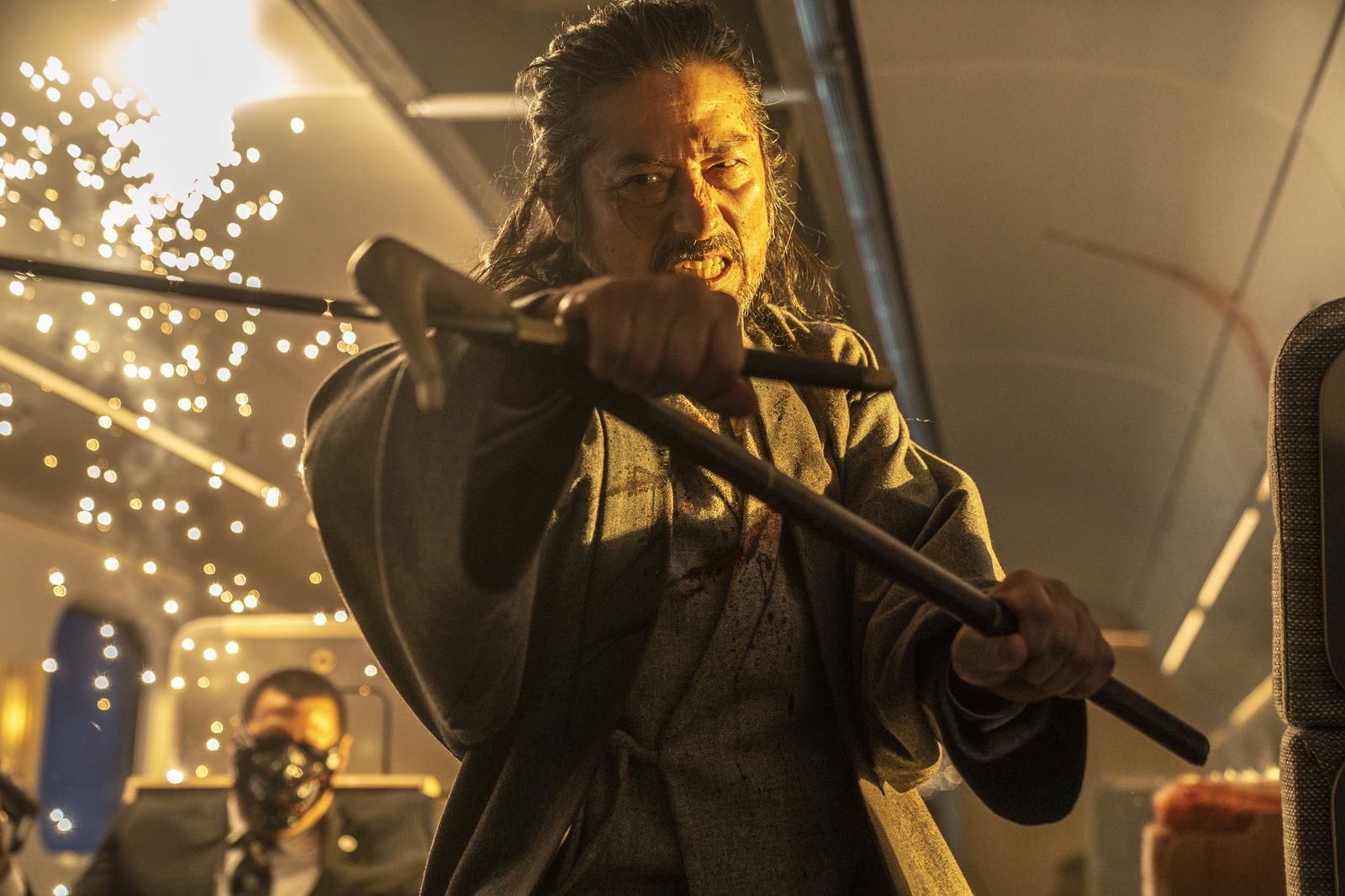All aboard the Shinkansen, Japan’s high-speed bullet train that makes American rail look like a trolley system. It’s the fittingly high-speed setting for a high-octane thrill ride helmed by David Leitch. The director of the inventive action series John Wick takes his brand of action on the rails with a filmed adaptation of Bullet Train by Kotaro Isaka. The story focuses on Ladybug, an unlucky assassin given the deceptively simple job of riding the Shinkansen just one stop to retrieve a briefcase onboard.
But we wouldn’t have a whole movie if it were that easy. Also onboard are several other eccentric assassins with their own motives, as well as a venomous snake, a lovesick tourist, and an annoyingly adorable anime mascot. I won’t spoil either the book or the movie, but I will compare the two throughout. Bullet Train is the rare Hollywood adaptation with respect for its source material, even where it falters.
Both the book and the film adaptation contain a good deal of action and comedy. The book focuses on philosophy and absurdly dark situations. Meanwhile, the movie removes much of the philosophical debate in favor of playing up the action and humor. Still, it remains surprisingly faithful. The book makes much of setting up various moving pieces and having them fall into place in satisfying ways. The film succeeds at this as well, and a few changes push this concept further. One significant substitution comes from the ending, and where the book slows down, the film speeds up—figuratively and literally.
That said, while the film does a commendable job adapting the many gags, characters, conflicts, twists, and other elements from the novel, it loses subtlety and nuance. There’s a surprisingly deep running joke in the book about Thomas the Tank Engine, and while the film makes the right choice to retain it, the comedy bit becomes somewhat blunt in adaptation. Some jokes that previously had bizarrely insightful underpinnings come off as ridiculous for the sake of ridiculous here.
Not that that’s a terrible thing, mind you. Bullet Train wears its absurdity openly like the blood splatters on the shirts of its characters. It is a movie that takes absolute glee in everything from its fight choreography and cinematography to its acting and editing. One gets the sense that much of the cast and crew had a blast making this film, and that energy permeates through the screen. Stunt coordinator Greg Rementer stages a unique close-quarters fight with the characters in their seats and multiple briefcase battles. Editor Elisabet Ronaldsdottir edits several fun montages, including one for an inanimate object hilariously set to Kyu Sakamoto’s upbeat song “Ue o Muite Aruko”—known in the west as “Sukiyaki.”
And of course, we can’t forget our high-profile cast onboard this high-speed train. Brad Pitt puts aside his characteristic confidence for the goofy weariness of the platitude-espousing Ladybug. He even comes off as a tad nebbishy. Joey King plays a restrained and gender-swapped version of the psychotic character of The Prince from the book and works fine enough with the reined-in characterization. Andrew Koji grounds the film’s few serious notes as Kimura, a father-turned-assassin blackmailed by The Prince. On the flip side, Aaron Taylor-Johnson and Brian Tyree Henry go absolutely off the rails in multiple ways, as the duo of Tangerine and Lemon, supposed “twins.” They seem to have the most fun, just ahead of a few supporting cast members and a couple of actors in goofy cameos.
Much has been made of the white-washing of the cast, though many of the cast members aren’t white—they’re just not Japanese. Author Kotaro Isaka didn’t mind, and I can see why, since the script by Zak Olkewicz has much love for the source material. And yet, it’s strange to see a version of Japan with so many Westerners, like the entire country decided to go on holiday during tourist season. As some consolation, the film gives solid monologues and fight scenes to the exemplary Japanese thespian and martial artist Hiroyuki Sanada—albeit late in the game.
One strange bit of casting sidelining a talented Japanese-American performer comes from Karen Fukuhara as a trolley car attendant. The martial arts and sword fight expert gets to showcase her stuntwork on Amazon’s The Boys, but she just pushes a snack cart around here. Even her character in the book does more, and I wonder if the addition of Zazie Beetz to the cast ended up switching around her role. It’s a shame because Fukuhara would otherwise suit Bullet Train so well. The wasted opportunity is like casting James Earl Jones as a mute.
So how does Bullet Train the movie stack up to the book? I would still say the book is better, moving surprisingly—or perhaps fittingly—fast through its abundant chapters and allowing many moving pieces to fall into place. That said, the film comes pretty darn to replicating the kinetic spirit of the source. Some bits, like one with the stealthy serpent, actually land better in the movie version due to the added potential for physical comedy. And David Leitch knows his action, with the blunt existentialism of the book traded for the blunt force of combat on the rails. It’s a fast-paced ride that occasionally slows down but always regains its speed.
Bullet Train Review
Bullet Train
Bullet Train may not reinvent the action comedy genre, but it gets a ton of mileage from its premise with jokes and jabs that fly as fast as the vehicle at the film’s center.
-
Bullet Train Review





